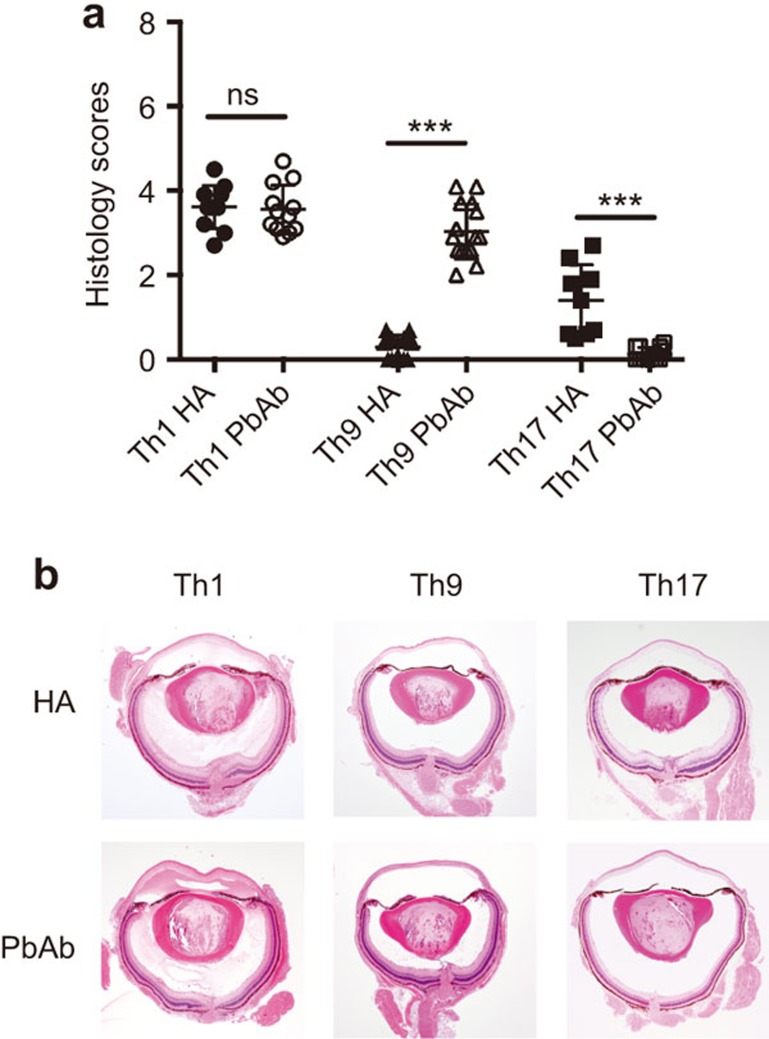Figure 2.
(a) Variability of pathogenicity between Th lineages generated during polarization by activation with either HA or PbAb. Summaries of three independent experiments. **P<0.01, ***P<0.001. (b) Sections of representative eyes of mice recipients of Th1, Th9 or Th17, generated by HA or PbAb modes and collected on day 7 post-cell injection. Severe changes are seen in eyes of Th1 recipients, generated by either HA or PbAb. Changes are also seen in recipients of Th9 cells generated by PbAb, but not by HA; whereas Th17 cells were pathogenic only when generated by the HA mode, but not by the PbAb mode. The typical ocular pathological changes mainly include accumulation of inflammatory cells at the two ‘sites of entry', namely, the optic nerve head and limbus, and infiltration of inflammatory cells into the vitreous and anterior chamber. Also typical are the edematous changes in the retina and cornea. Scoring the histopathological changes was performed as detailed elsewhere.11 In brief, changes were scored separately in the anterior chamber, vitreous and retina, on a scale of 0–3 each, with the maximum sum score being 9.0. Ab, antibody; Th, T-helper.

